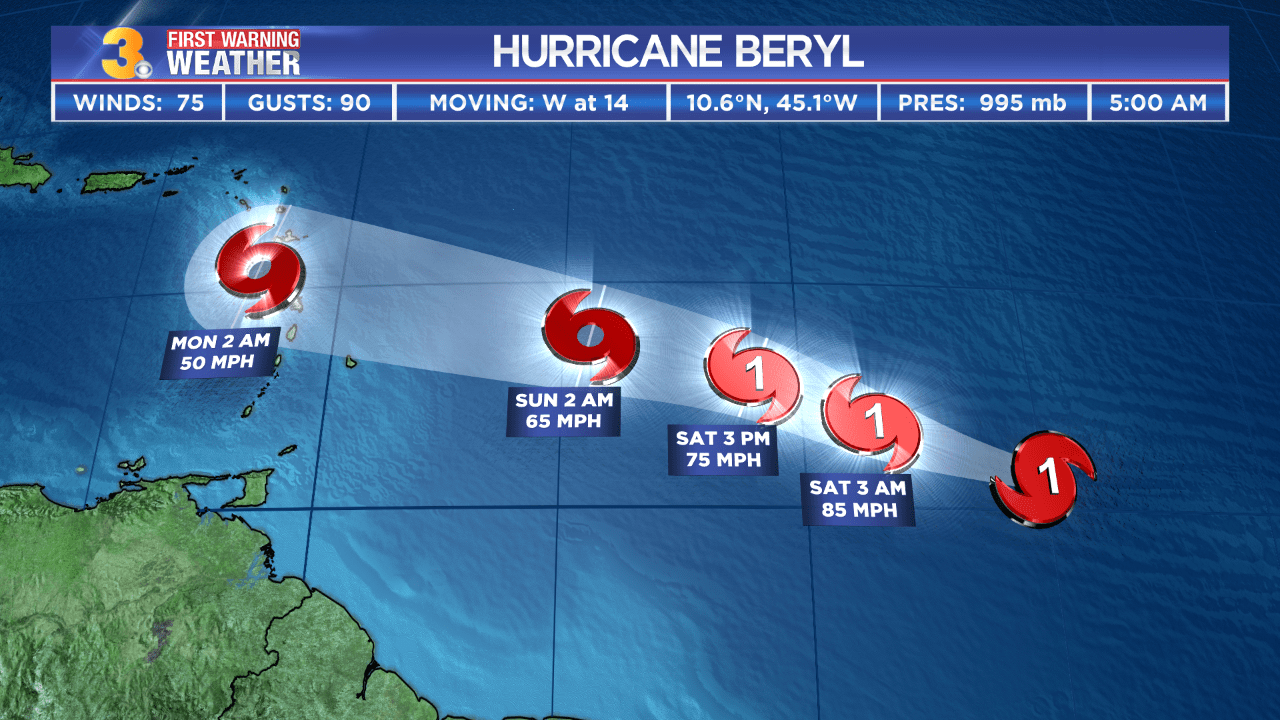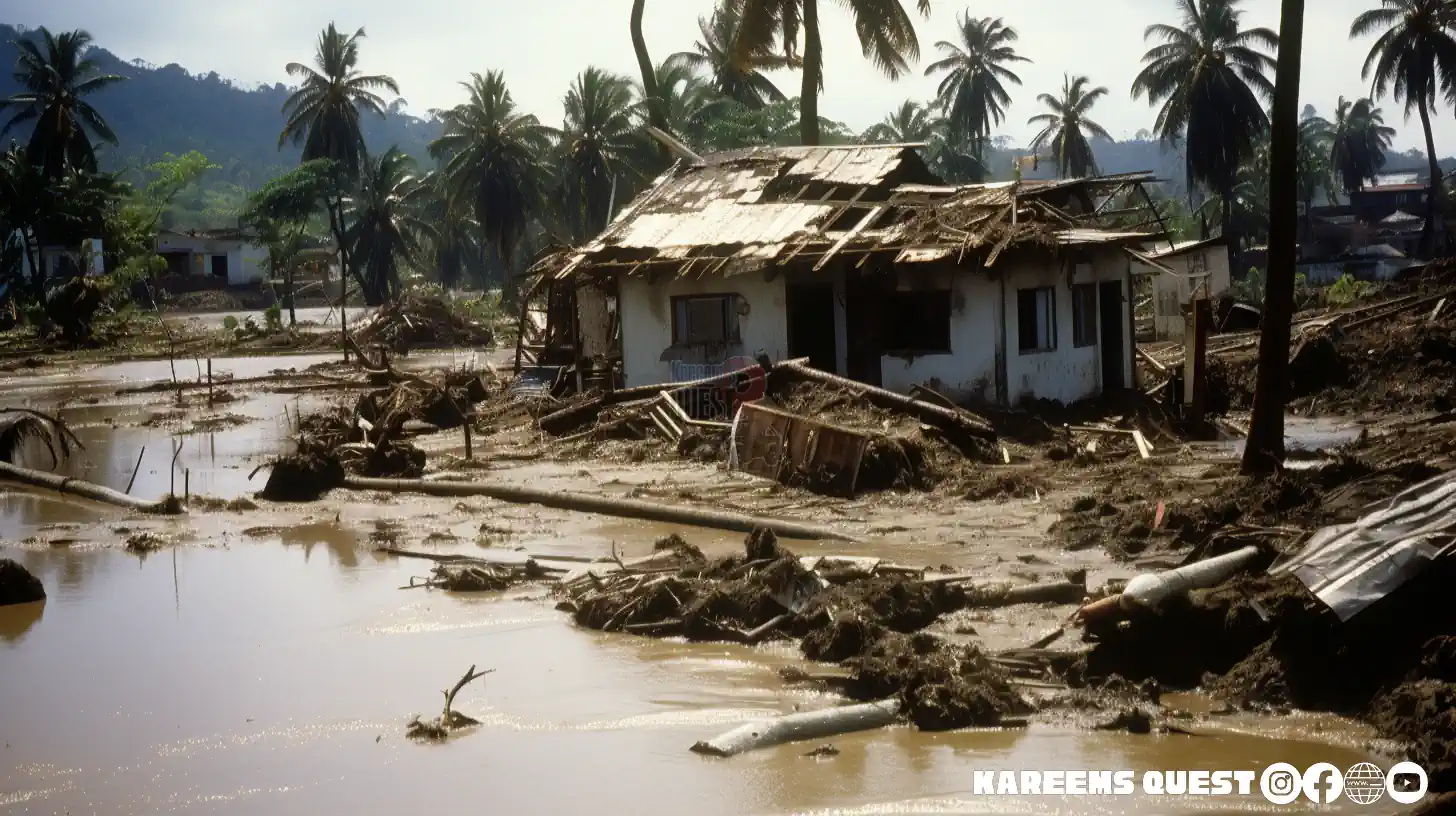Hurricane Beryl’s Impact on Jamaica

Hurricane beryl jamaica – Hurricane Beryl, a Category 1 hurricane, made landfall in Jamaica on July 5, 2023, bringing heavy rainfall and strong winds to the island. The hurricane’s path took it across the southern coast of Jamaica, with the center of the storm passing near the town of Alligator Pond.
The hurricane caused widespread damage to infrastructure, property, and agriculture in Jamaica. Many roads and bridges were damaged or destroyed, making it difficult for people to get around. Thousands of homes were damaged or destroyed, leaving many people homeless. The hurricane also caused significant damage to crops, particularly bananas and sugar cane, which are important exports for Jamaica.
Hurricane Beryl a breeze tru Jamaica, but it did mek a lil stir. Beryl neva stay long, but it did cause some damage. When we did tink it gone, we hear bout Hurricane Beryl again, dis time in Barbados. Barbados Hurricane Beryl did cause more damage dan Jamaica.
But we glad fi hear seh it neva too bad. We hope seh Hurricane Beryl gone fi good now, and we nuh waan see it again.
Economic Impact
The economic impact of Hurricane Beryl on Jamaica is still being assessed, but it is expected to be significant. The damage to infrastructure and property will require a large investment to repair. The loss of crops will also have a negative impact on the economy, as Jamaica relies heavily on agriculture for exports.
Tourism Industry
The tourism industry is also expected to be impacted by Hurricane Beryl. Many hotels and resorts were damaged or destroyed, and it will take time to repair them. The loss of tourism revenue will have a negative impact on the economy, as tourism is a major source of income for Jamaica.
Hurricane Beryl was a powerful storm that impacted Jamaica, causing widespread damage and flooding. The storm also affected other Caribbean islands, including Barbados, where it brought heavy rains and winds. For more information on the impact of Hurricane Beryl in Barbados, visit beryl barbados.
Despite the damage caused by the hurricane, Jamaica is working to rebuild and recover. The country is receiving support from international organizations and neighboring countries to help with the recovery efforts.
Jamaica’s Response to Hurricane Beryl

Jamaica’s response to Hurricane Beryl involved a comprehensive approach involving the government, local communities, and international aid organizations. The government implemented emergency measures before, during, and after the hurricane to minimize its impact on the population and infrastructure.
Government’s Emergency Measures
Prior to the hurricane’s arrival, the government issued early warnings, activated emergency response plans, and evacuated vulnerable communities. During the hurricane, the government provided shelter, food, and medical assistance to those affected. After the hurricane, the government focused on restoring essential services, providing financial assistance to affected individuals and businesses, and coordinating long-term recovery efforts.
Role of Local Communities
Local communities played a crucial role in Jamaica’s response to Hurricane Beryl. Community organizations, churches, and volunteers provided support to affected individuals and families, including providing food, shelter, and emotional support. They also assisted in cleanup and recovery efforts, working alongside government agencies and international aid organizations.
International Aid
International aid organizations, such as the United Nations and the Red Cross, provided significant assistance to Jamaica in the aftermath of Hurricane Beryl. These organizations provided financial aid, medical supplies, and technical expertise to support the government’s response efforts and the recovery process.
Evaluation of Disaster Preparedness and Response Plans
Jamaica’s disaster preparedness and response plans were generally effective in mitigating the impact of Hurricane Beryl. The early warnings and evacuation measures helped to reduce the number of casualties and property damage. The government’s response during and after the hurricane was swift and coordinated, ensuring that affected individuals and communities received timely assistance.
However, there were some areas for improvement identified in the aftermath of the hurricane. These included enhancing communication systems for early warnings, increasing the capacity of shelters, and improving coordination between different agencies involved in disaster response.
Lessons Learned from Hurricane Beryl: Hurricane Beryl Jamaica
Hurricane Beryl’s impact on Jamaica highlighted the importance of disaster preparedness and response. Several key lessons can be learned from this event to improve future efforts.
One lesson is the need for timely and accurate information. During Hurricane Beryl, there was some confusion and misinformation about the storm’s path and intensity. This led to some people not taking the necessary precautions, which could have put them at risk.
Strengthening Communication Channels
To address this issue, Jamaica should strengthen its communication channels to ensure that timely and accurate information is available to the public. This could involve investing in new technology, such as weather forecasting systems, and training more meteorologists.
Another lesson learned is the importance of community preparedness. Many communities in Jamaica were not adequately prepared for Hurricane Beryl, which led to increased damage and disruption. To address this, Jamaica should develop and implement community preparedness plans.
Community Preparedness Plans, Hurricane beryl jamaica
These plans should include information on evacuation routes, shelter locations, and emergency supplies. They should also be tailored to the specific needs of each community.
Finally, Hurricane Beryl highlighted the need for Jamaica to invest in disaster-resilient infrastructure. Many buildings and roads in Jamaica were damaged by the storm, which disrupted essential services and businesses.
Investing in Disaster-Resilient Infrastructure
To address this, Jamaica should invest in building codes and standards that require new buildings to be able to withstand hurricanes. The country should also invest in upgrading existing infrastructure, such as roads and bridges.
By learning from the lessons of Hurricane Beryl, Jamaica can improve its disaster preparedness and response efforts and become more resilient to future hurricanes and other natural disasters.